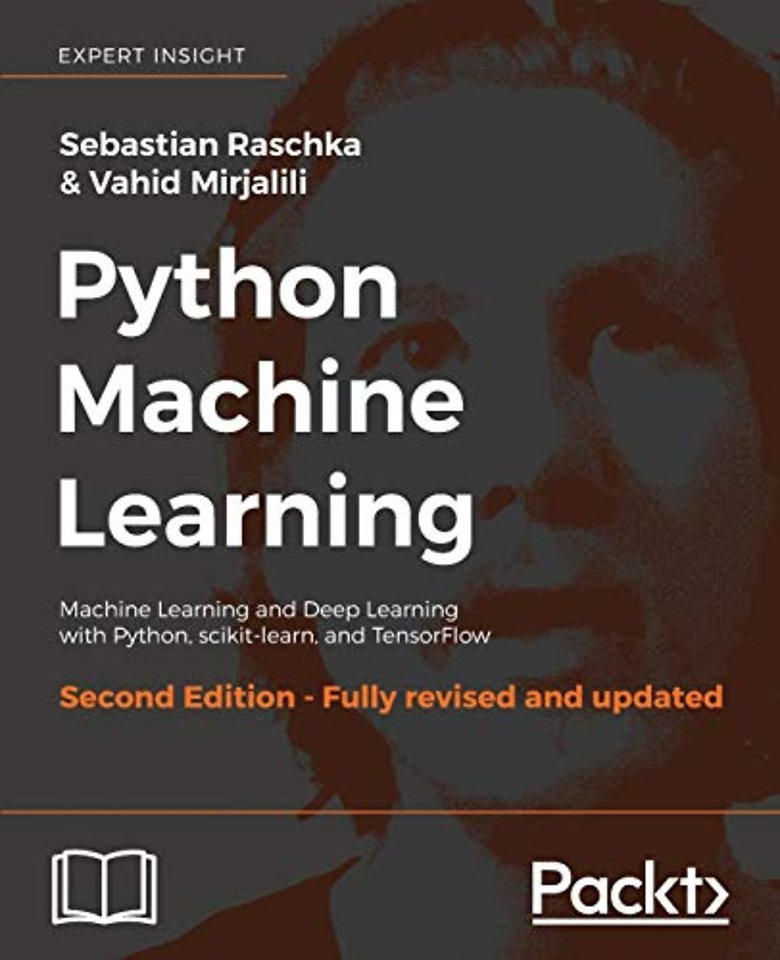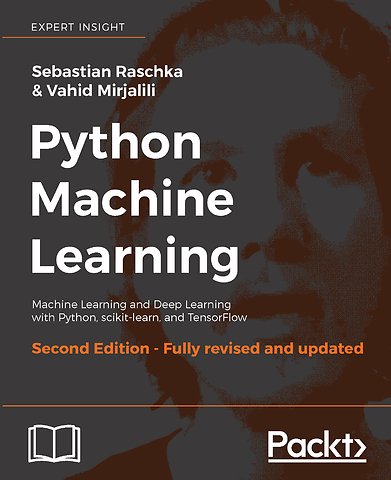


Sebastian Raschka, author of the bestselling book, Python Machine Learning, has many years of experience with coding in Python, and he has given several seminars on the practical applications of data science, machine learning, and deep learning, including a machine learning tutorial at SciPy - the leading conference for scientific computing in Python.
Meer over de auteursPython Machine Learning
Machine Learning and Deep Learning with Python, scikit-learn, and TensorFlow
Samenvatting
- Understand the key frameworks in data science, machine learning, and deep learning
- Harness the power of the latest Python open source libraries in machine learning
- Master machine learning techniques using challenging real-world data
- Master deep neural network implementation using the TensorFlow library
- Ask new questions of your data through machine learning models and neural networks
- Learn the mechanics of classification algorithms to implement the best tool for the job
- Predict continuous target outcomes using regression analysis
- Uncover hidden patterns and structures in data with clustering
- Delve deeper into textual and social media data using sentiment analysis
Machine learning is eating the software world, and now deep learning is extending machine learning. Understand and work at the cutting edge of machine learning, neural networks, and deep learning with this second edition of Sebastian Raschka’s bestselling book, Python Machine Learning. Thoroughly updated using the latest Python open source libraries, this book offers the practical knowledge and techniques you need to create and contribute to machine learning, deep learning, and modern data analysis.
Fully extended and modernized, Python Machine Learning Second Edition now includes the popular TensorFlow deep learning library. The scikit-learn code has also been fully updated to include recent improvements and additions to this versatile machine learning library.
Sebastian Raschka and Vahid Mirjalili’s unique insight and expertise introduce you to machine learning and deep learning algorithms from scratch, and show you how to apply them to practical industry challenges using realistic and interesting examples. By the end of the book, you’ll be ready to meet the new data analysis opportunities in today’s world.
If you’ve read the first edition of this book, you’ll be delighted to find a new balance of classical ideas and modern insights into machine learning. Every chapter has been critically updated, and there are new chapters on key technologies. You’ll be able to learn and work with TensorFlow more deeply than ever before, and get essential coverage of the Keras neural network library, along with the most recent updates to scikit-learn.
A practical approach to key frameworks in data science, machine learning, and deep learning
Use the most powerful Python libraries to implement machine learning and deep learning
Get to know the best practices to improve and optimize your machine learning systems and algorithms
Specificaties
Over Vahid Mirjalili
Inhoudsopgave
2 Training Simple Machine Learning Algorithms for Classification
3 A Tour of Machine Learning Classifiers Using scikit-learn
4 Building Good Training Sets – Data Preprocessing
5 Compressing Data via Dimensionality Reduction
6 Learning Best Practices for Model Evaluation and Hyperparameter Tuning
7 Combining Different Models for Ensemble Learning
8 Applying Machine Learning to Sentiment Analysis
9 Embedding a Machine Learning Model into a Web Application
10 Predicting Continuous Target Variables with Regression Analysis
11 Working with Unlabeled Data – Clustering Analysis
12 Implementing a Multilayer Artificial Neural Network from Scratch
13 Parallelizing Neural Network Training with TensorFlow
14 Going Deeper – The Mechanics of TensorFlow
15 Classifying Images with Deep Convolutional Neural Networks
16 Modeling Sequential Data Using Recurrent Neural Networks
Anderen die dit boek kochten, kochten ook
Net verschenen
Rubrieken
- aanbestedingsrecht
- aansprakelijkheids- en verzekeringsrecht
- accountancy
- algemeen juridisch
- arbeidsrecht
- bank- en effectenrecht
- bestuursrecht
- bouwrecht
- burgerlijk recht en procesrecht
- europees-internationaal recht
- fiscaal recht
- gezondheidsrecht
- insolventierecht
- intellectuele eigendom en ict-recht
- management
- mens en maatschappij
- milieu- en omgevingsrecht
- notarieel recht
- ondernemingsrecht
- pensioenrecht
- personen- en familierecht
- sociale zekerheidsrecht
- staatsrecht
- strafrecht en criminologie
- vastgoed- en huurrecht
- vreemdelingenrecht





